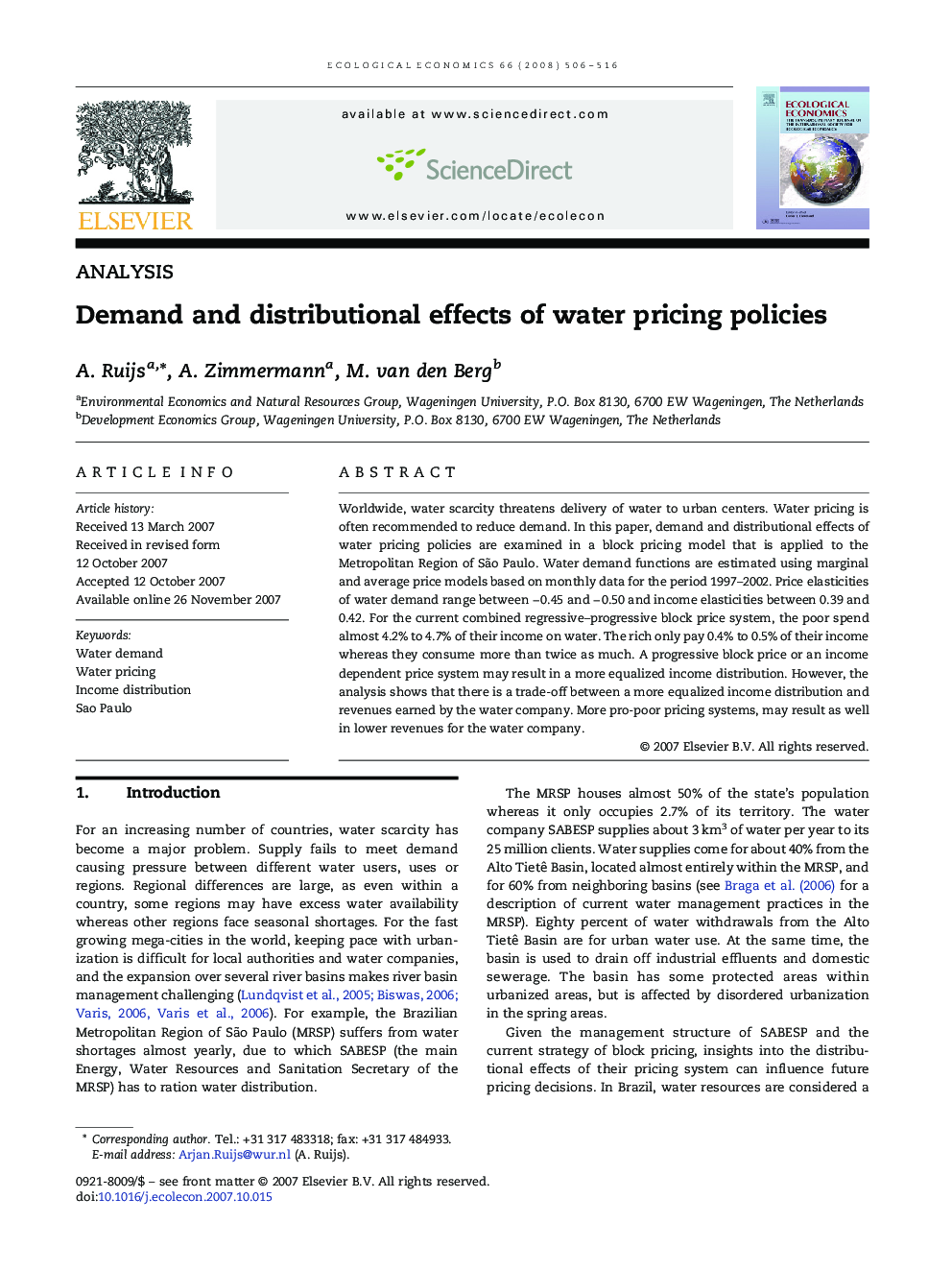| Article ID | Journal | Published Year | Pages | File Type |
|---|---|---|---|---|
| 5051589 | Ecological Economics | 2008 | 11 Pages |
Worldwide, water scarcity threatens delivery of water to urban centers. Water pricing is often recommended to reduce demand. In this paper, demand and distributional effects of water pricing policies are examined in a block pricing model that is applied to the Metropolitan Region of São Paulo. Water demand functions are estimated using marginal and average price models based on monthly data for the period 1997-2002. Price elasticities of water demand range between â 0.45 and â 0.50 and income elasticities between 0.39 and 0.42. For the current combined regressive-progressive block price system, the poor spend almost 4.2% to 4.7% of their income on water. The rich only pay 0.4% to 0.5% of their income whereas they consume more than twice as much. A progressive block price or an income dependent price system may result in a more equalized income distribution. However, the analysis shows that there is a trade-off between a more equalized income distribution and revenues earned by the water company. More pro-poor pricing systems, may result as well in lower revenues for the water company.
